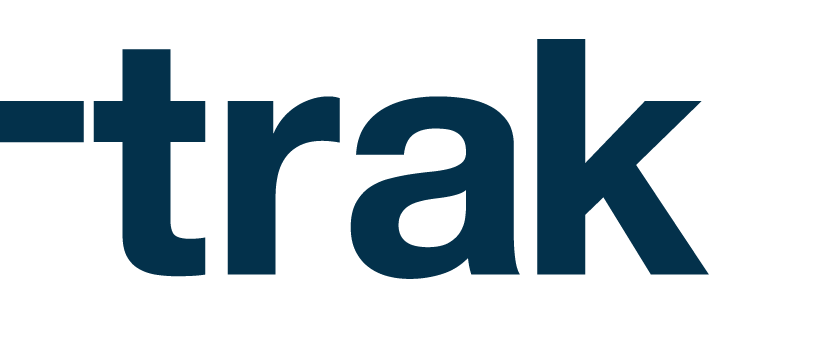Ezgi Tezcan: Let’s start with getting to know you and –trak. What’s –trak, what does it focus on?
Bihter Çelik: I was graduated from Department of Architecture in ITU in 2011 and since then in –trak, with my colleagues, I have been creating micro-scaled, mostly timeless, user focused projects with complementary characteristics. And all that jazz… When we got graduated, we found ourselves in a period where the ongoing construction stocks were renewed without any interrogation and in a progressive accelerated way and in those circumstances, we supposed that the same type of work was also expected from us. What we were questioning with concern was, how and till when a city could take this same type of production.
And we came up with the fact that those typologies wouldn’t really work when it comes to the lack of complementary pieces in spite of new productions. For example, the chair that I am sitting on at the moment is very ergonomic and I need a chair like that at home but at the same time being exposed to these and similar chairs for 7/24 would be an issue. It gets monotonous: the same case for both the furnitures and also the cities. When somethings are multiplexing while the other components are decreasing in the environment, this would cause a danger. Hence, we are trying to produce singular objects to balance the environment as if in the acid base balance. We are trying to neutralize. During the process, we had many different people’s participation, teams changed but the scale of work has always stayed accordingly.
Mutlu Güngör: I got graduated from the university in the same year with Bihter and since last May we are managing project based works together in –trak.
Basically, we are trying to construct user-usage focused, permanent or temporary and empirical designs for the parts of the city where we see needs for some touch. Shortly, we are developing projects to answer to a need. It is really difficult especially in İstanbul but when we do, it is a pleasure.
Ezgi Tezcan: Could you clarify more the subject that we mention as scale? What is included in this micro-scale definition?
Bihter Çelik: When I am pronouncing scale, I am thinking about our work and our office once more. Our structure is based on working with both architecture offices and individual employers or we foresee some subjects as projects to work on. Our works show its first variability with this togetherness.
Sometimes a specific city furniture, sometimes a food trolley for demi public areas or sometimes a commode can be the project. Or sometimes instead of being articulated to the environment, we participate to the project from the first phase.
When planning for the macroscale, sometimes there are difficulties to fluctuate, this is where we enter to the game. In this way, here also a complementary future focused project is being realized. For example; our relation with water will be totally different in 10 years, for which we should start to look out, so for the already planned macroscaled projects, we are trying to create projections about future. We participated to City Link Festival in Copenhagen this month. We collaborated with our design thinker Tuğçe Karataş. While she is making a textual production, we found ourselves creating the area of what she was writing.
On the other hand; we have some volunteer projects that we think are very useful socioculturally. Last week we realized a workshop in Kadıköy. We put a stable instalment in Boğa Square where it is the the busiest and most directionless point of the city. With our collaboration as1 Spanish, 3 Turkish and many individual participants.
This is a project that we can sum up substantially being as; 10 seating units on top of the levellings that adjust highly inclined road and this is just a beginning for us. In an open place like that concerning vandalism and pace of the crowd, we are estimating a life period of 6 months for such furniture and we would like it to be even more long-lasting from both ecological and economical point of views. That’s the reason why we are moving on by encouraging the ownage with some little interventions.
Ezgi Tezcan: What you define as a completing situation is in fact breaking through the definition of emptiness, so its difficulty is also coming from that point? Is it beginning at the same time when the observation starts?
Mutlu Güngör: Frankly, the more experience you get, the better you determine the need. But unfortunately in Turkey, in general we are not aware that with some small ameliorations to the deficiencies, some places could be turned into more functional, more productive and creative areas. Even We, the designers or the architects, are aware of this fact, but unfortunately those small touches are not seen as necessary by the employers. I believe that it will be progressing slowly but it has a way to go to be in a mature level.
Bihter Çelik: I imagine a period of time where the need won’t be announced unfairly only by one sided actors but also will be able to be spoken out by the opponents. On the other hand I am hopeful about development of this period. Determination of the need is not only limited to the physical need sometimes. The need for a common language; sometimes I think we are filling in the emptiness with our existence. The way we design, the jargon we use, they all become similar. The way of thinking on our work, the way we talk start to affect the language we use. We see that it affects to producer’s language and way of production for instance. We see its dissemination from the first level to the top that I find as an healthy progression.
The work we do brings experience along with observation. By experiencing, we get the knowledge that we couldn’t get only by observing.
I should know what my craftsman is experiencing so that I could better direct the process and this only happens contacting with the material. That’s the reason why, the thing that we consume the most is time. It is the least given thing to us in this capitalist world in fact; we are forced to create projects without the necessary time. That’s also the reason why we go over the limit in the scale of the city and of the environment. Our processes take more time compared with this scale and we are moving forward with our individual sacrifices.
Ezgi Tezcan: It is really a pleasant work to be in touch with the material itself and to work on it. So how do you build the circulation of the materials? Do you use any alternative materials? How do the materials interact with the settled areas?
Bihter Çelik: First of all, along with the theoretical information, we all have the same mentality to learn the work from the atelier, from the person who practices it. We have a method where we can operate the confirmation mechanisms and test every step one by one. And that gives us confidence, in five years time what we have created is above the average.
Some materials are always on our mind and always at our disposal, we find ourselves working with them very often. If our need is specifically wood at that time or sometimes even though we are fed up with using the same material over and over again but still the need is pallet, then we don’t try to change the material but go on with it. We do the new trials in micro-scale and for temporary designs as that’s how we can better evaluate the performance of the material. For example, last week we had a new trial with the Repairs Club where we had the intention to fulfill the broken pieces on the streets with 3D print outs.
I think we found out different ways of circulation for the materials during the process; re-usable circulations…
We know that by the help of the prescriptions that we have written about the stocking and the second usage of a work we have done for a commercial company, we prolonged the materials’ life.
Although the components of the product don’t seem to be economical, by increasing the number of its usages, we are also increasing its ecological and economical values.
Mutlu Güngör: I think that if we want to introduce ourselves as architects, we should definitely be a part of every little detail of the design we create. And first of all that takes places by experiencing the material itself. Every material, structure, paint we try, develops our knowledge and skills. The ones with the lack of those experiences and knowledges, will have more and more narrow vision and information. The best example would be the undergraduate education: Nobody would accept this but when we got graduated, we lost 95% of our vision that we gained in the first class. With that point of view by experiencing the materials in our atelier, we try new things, find new solutions. I can say that from that point of view, we have a practice where we are moving on by creating new re-usage scenarios, material circulations.



Leave a Reply